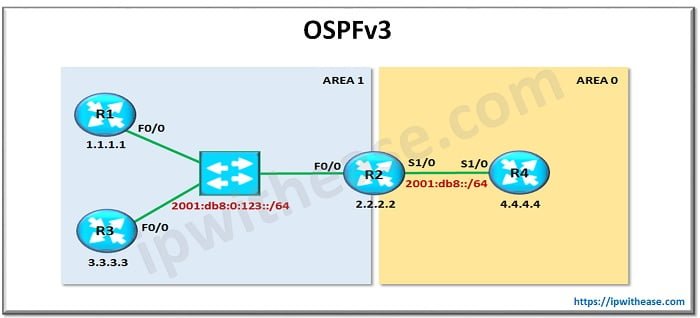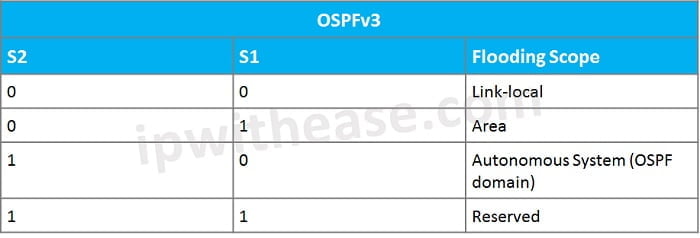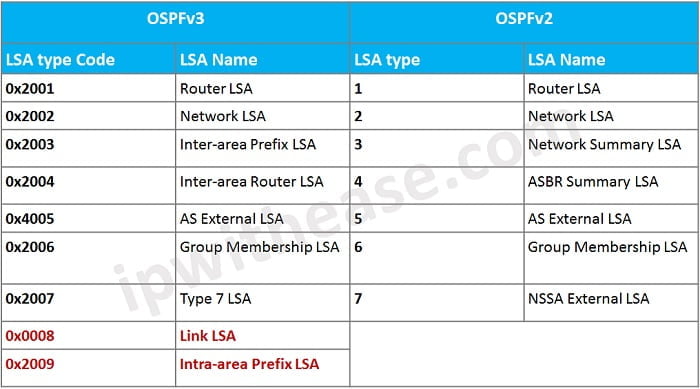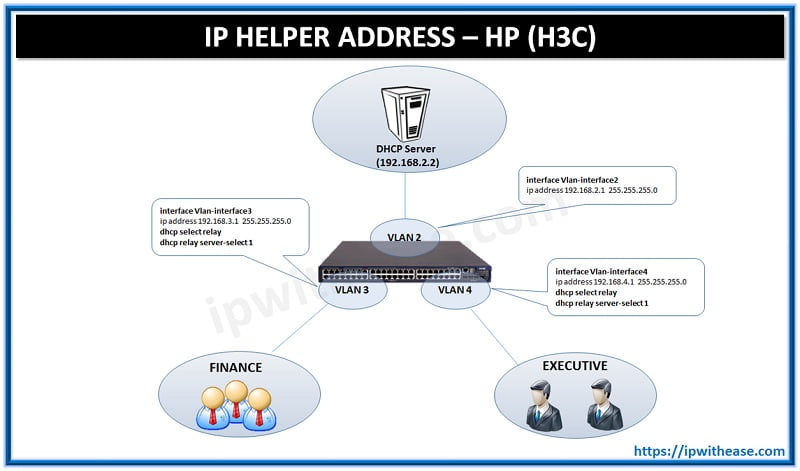Introduction to OSPF versions
OSPFv2: It was the previous version of OSPF which was used only for IPv4. Hence its is also called the IPv4 version of OSPF.

OSPFv3: With the advent of IPv6, a new version of OSPF is developed and hence it is called the IPv6 version of OSPF. OSPFv3 is essentially similar to OSPFv2 in the basic features, but it has few extensions.

Before discussing the differences between the two types of versions i.e. OSPFv2 vs OSPFv3, it is essential to understand the similarities between the two.
Similarities between OSPFv1 & OSPFv2
Notable is that OSPFv3 has few similarities with that of IPv4 version i.e. OSPFv2. Some of them are:
- Packet Type: Both have five Packet Types namely Hello, DD, LSA, LSU, LSAck
- Interface Type: Both support different Interface Types like P2P, P2M, NBMA, Broadcast, Virtual.
- Neighbor Discovery Pattern: Both have similar Neighbour Discovery.
- LSA flooding & aging: Both support LSA flooding & aging.
- SPF algorithm: Both use SPF algorithm for routing calculation.
- Hierarchical Areas: Both support Hierarchical Areas.
- LSA Types: 7 LSA types are identical
Differences between OSPFv1 & OSPFv2
IP version: As discussed earlier, OSPFv2 supports IPv4 routed protocol whereas OSPFv3 supports the latest routed protocol version i.e. IPv6.
Multicast Address: OSPFv2 supports multicast addresses 224.0.0.5 and 224.0.0.6. On the other hand, OSPFv3 supports multicast address FF02::5 and FF02::6
OSPF Instances: OSPFv2 doesn’t support multiples OSPF instances per interface, whereas, OSPFv3 supports multiples OSPF instances per interface.
Authentication: OSPFv2 supports plain text and MD5 authentication. On the other hand, OSPF v3 supports IPv6 authentication.
Subnets/Links: OSPFv2 runs on the network/subnets, whereas OSPFv3 runs on the links. So, the adjaceny is established over link local addresses in OSPFv3 and there is no requirement of a network mask.
IP Unicast Routing: IPv4 unicast routing is enabled by default in OSPFv2. However, in OSPFv3, The IPv6 Unicast routing has to be enabled using “IP Unicast-routing” global configuration command, as it is not enable by default.
Flooding Scope: There is no flooding scope in OSPFv2. But flooding scope is present in OSPFv3. The two bits of LSA called “S- bits” indicate flooding scope.
Header Size: The header size of OSPFv2 is 24 bytes. and that of OSPFv3 is 16 Bytes.
LSA Types: In addition to basic 7 LSA types present in OSPFv2, OSPFv3 has two more LSA types. There is a variation in the name of LSA types 3 and 4 (shown in table below). The two new LSA types are called “Link LSA” and “Intra-Area Prefix LSA”. The role of “Link LSA” is to notify link-local addresses, as it is in link-local scope, so it is never flooded. The role of “Intra-Area Prefix” LSA is to advertise IPv6 prefixes.
Neighbourship: OSPFv2 establishes neighbourship over IPv4 address whereas OSPFv3 establishes neighbourship over Link-local address.
Comparison Table: OSPFV2 vs OSPFV3
Following table lists the main differences between OSPFv2 and OSPFv3:

Download the comparison table: OSPFv2 vs OSPFv3
Continue Reading:
Understanding OSPF Forward Address
Configuring OSPF Passive Interface
ABOUT THE AUTHOR

You can learn more about her on her linkedin profile – Rashmi Bhardwaj



